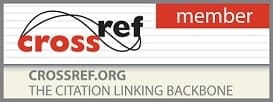
Printed Journal | Refereed Journal | Peer Reviewed Journal
International Journal of Horticulture and Food Science
2020, Vol. 2, Issue 1, Part A
Specific environment of aromatic plants cultivations and native microorganisms affect the effectiveness of the mycoparasites of the genus Trichoderma
Fanis A Tsapikounis, Constantinos G Ipsilandis and Vasileios Greveniotis
The environment has a major impact on both the physiological and the biochemical processes, even ontogenesis is a result of the interaction between the environment and the genotype. Nine mycoparasites of the sclerotia of Sclerotinia sclerotiorum were used in order to study the impact of the inoculum form and the environment of the experiment on their effectiveness. Organic cultivations of aromatic and medicinal plants, as well as fruiting vegetables, were used in order to exploit soil effects on mycoparasitism. The form of the inoculum (hyphae, spores-dusting, and spores-suspension) and the environment of the experiment (water agar, sterile soil, non-sterile soil) can have a decisive influence on the behaviour and mycoparasitism efficacy of the mycoparasites. As a result, there is considerable variation among the experiments ranging from 40-50% to even 100%. The antagonism in the soil, due to the microbial population, is proved a significant factor obliging the mycoparasite not only to be effective as a mycoparasite but also effective as an antagonist.
Pages : 31-40 | 1567 Views | 747 Downloads

How to cite this article:
Fanis A Tsapikounis, Constantinos G Ipsilandis, Vasileios Greveniotis. Specific environment of aromatic plants cultivations and native microorganisms affect the effectiveness of the mycoparasites of the genus Trichoderma. Int J Hortic Food Sci 2020;2(1):31-40. DOI: 10.33545/26631067.2020.v2.i1a.35



